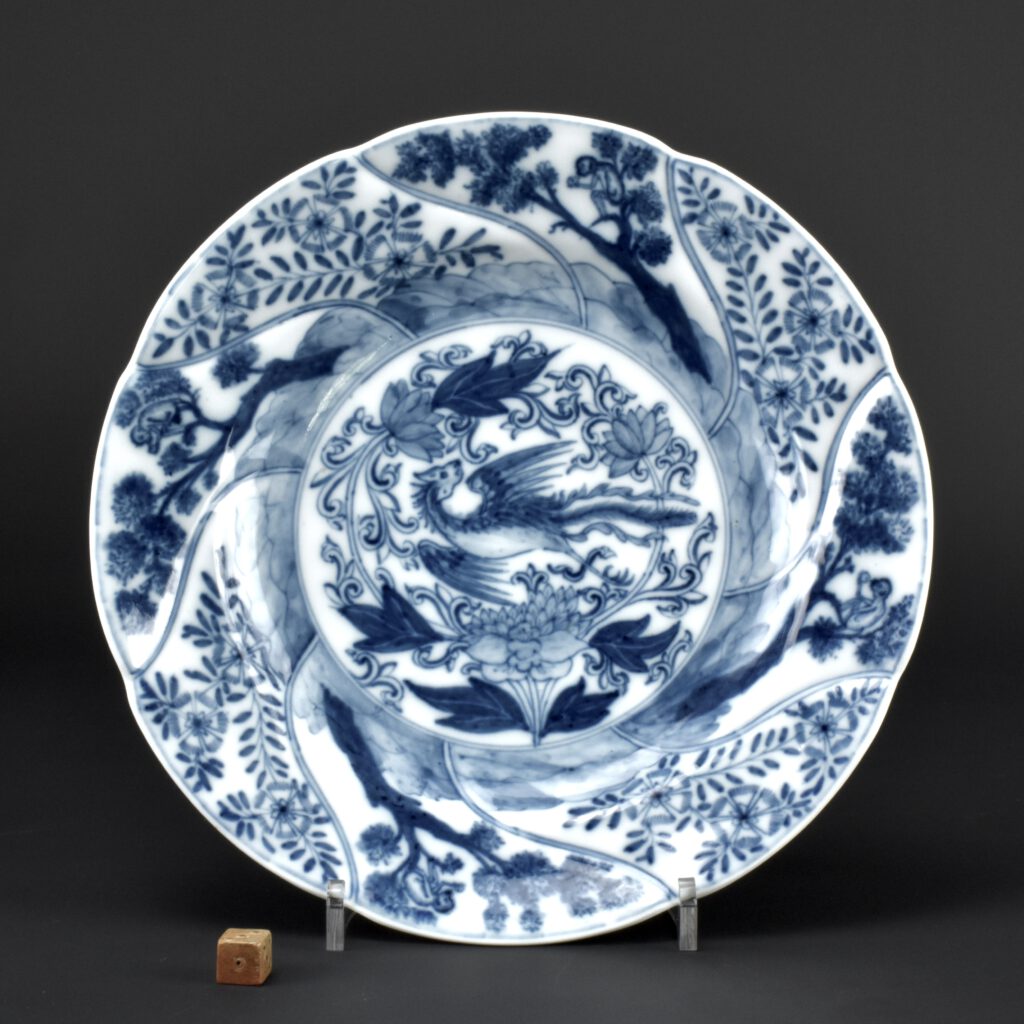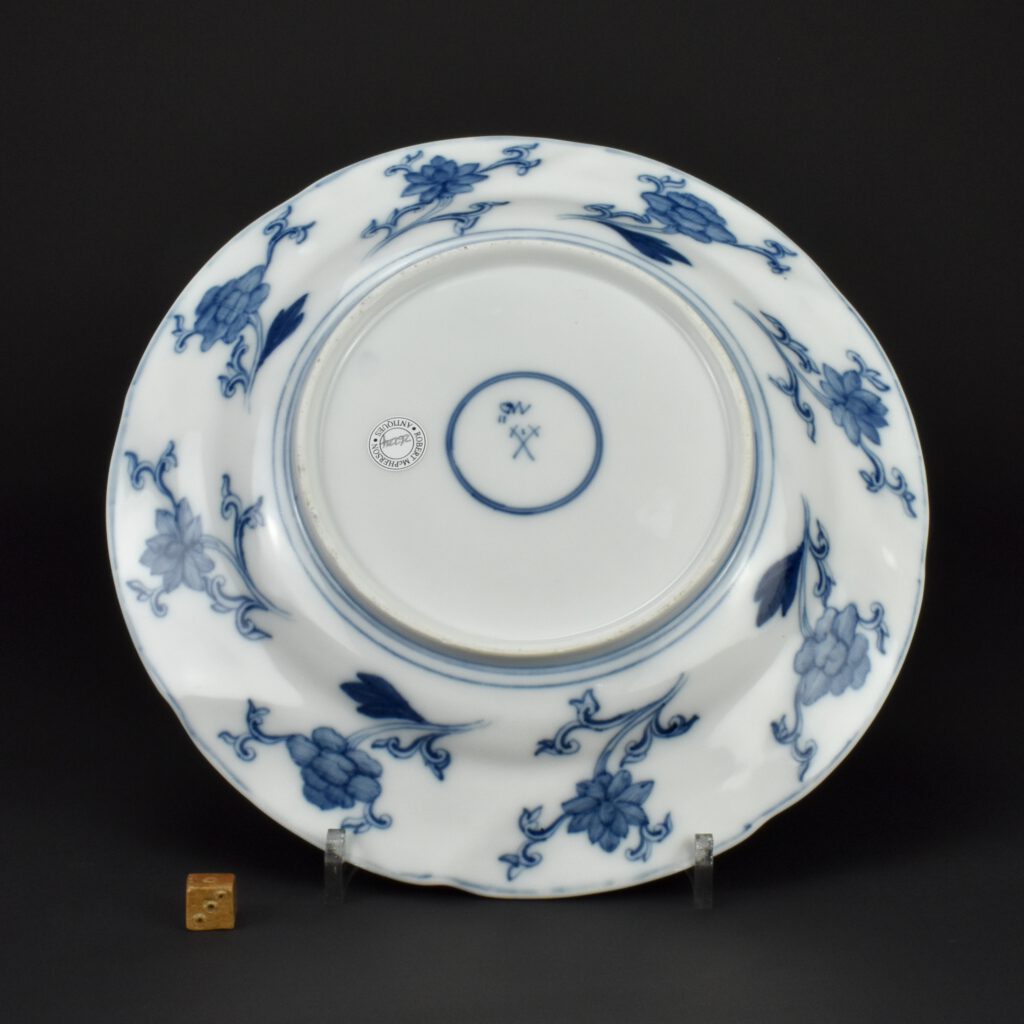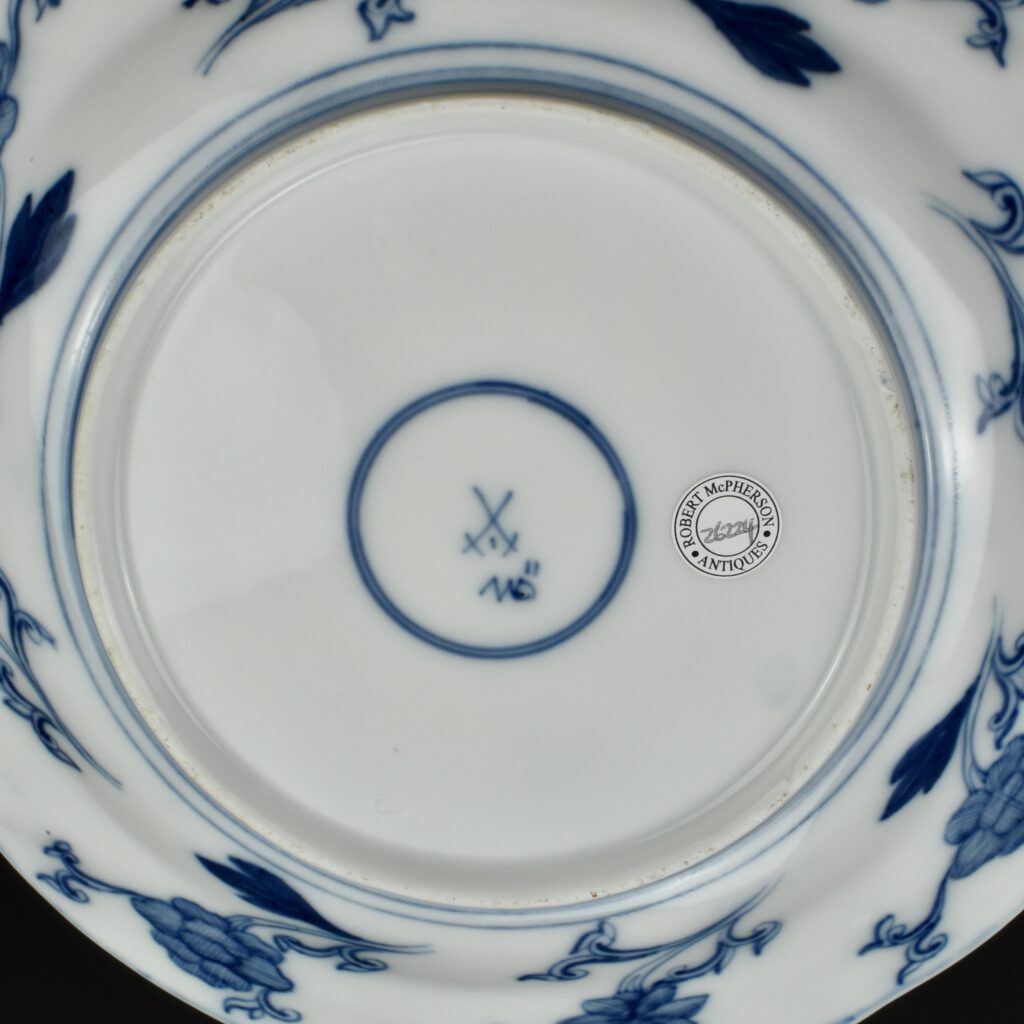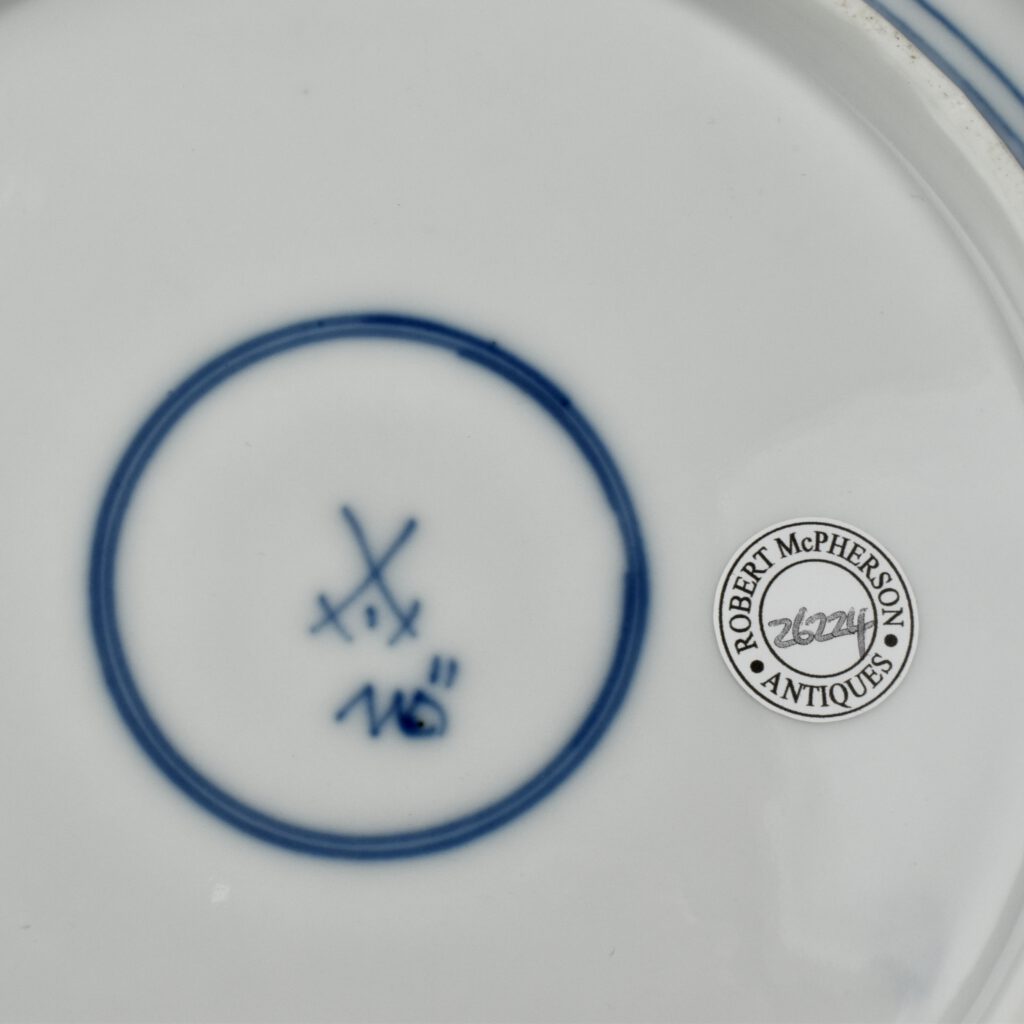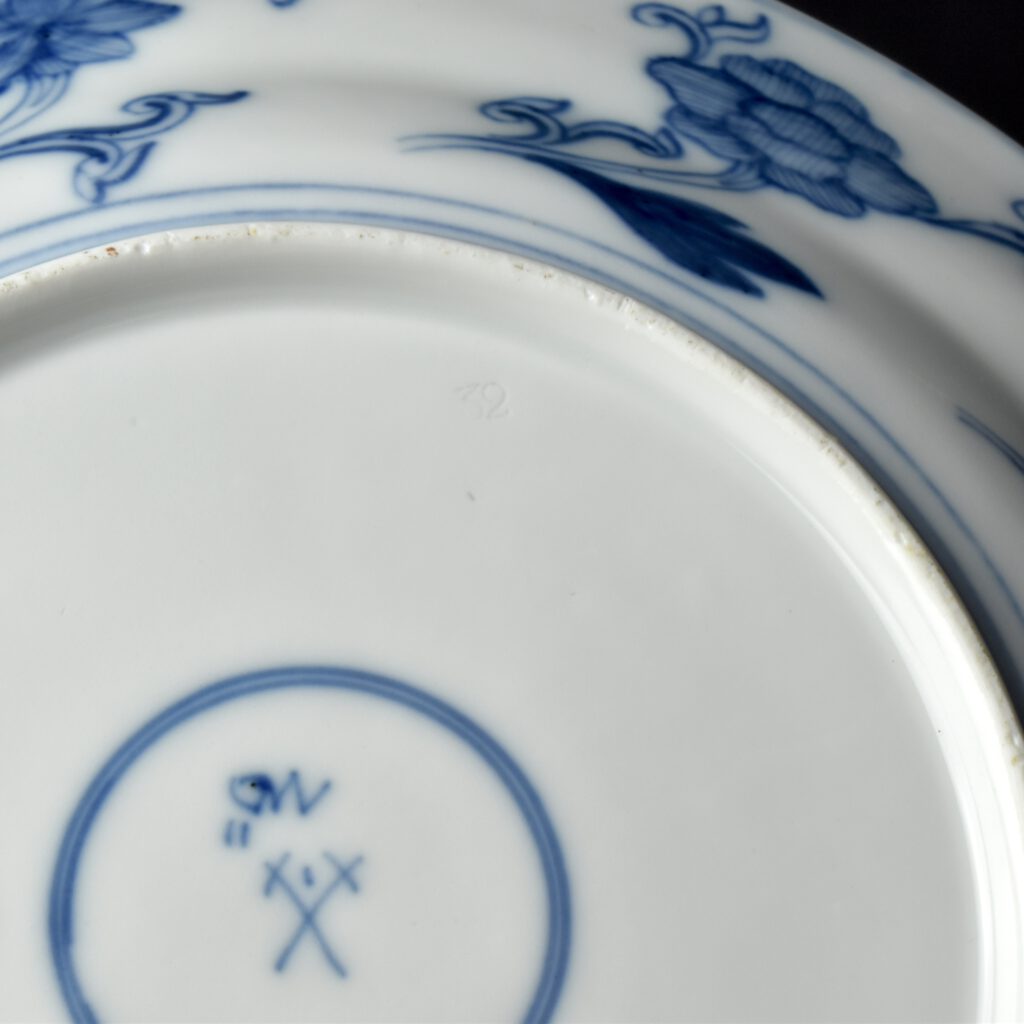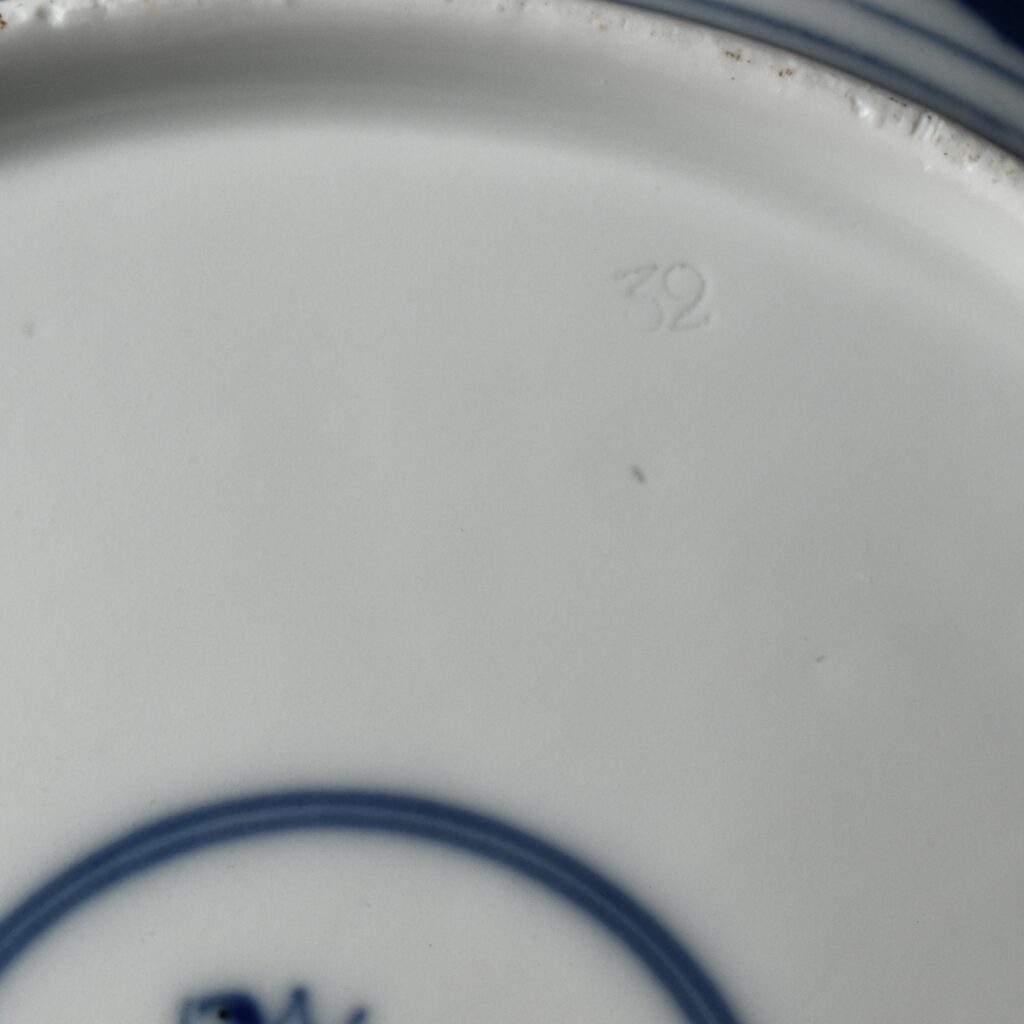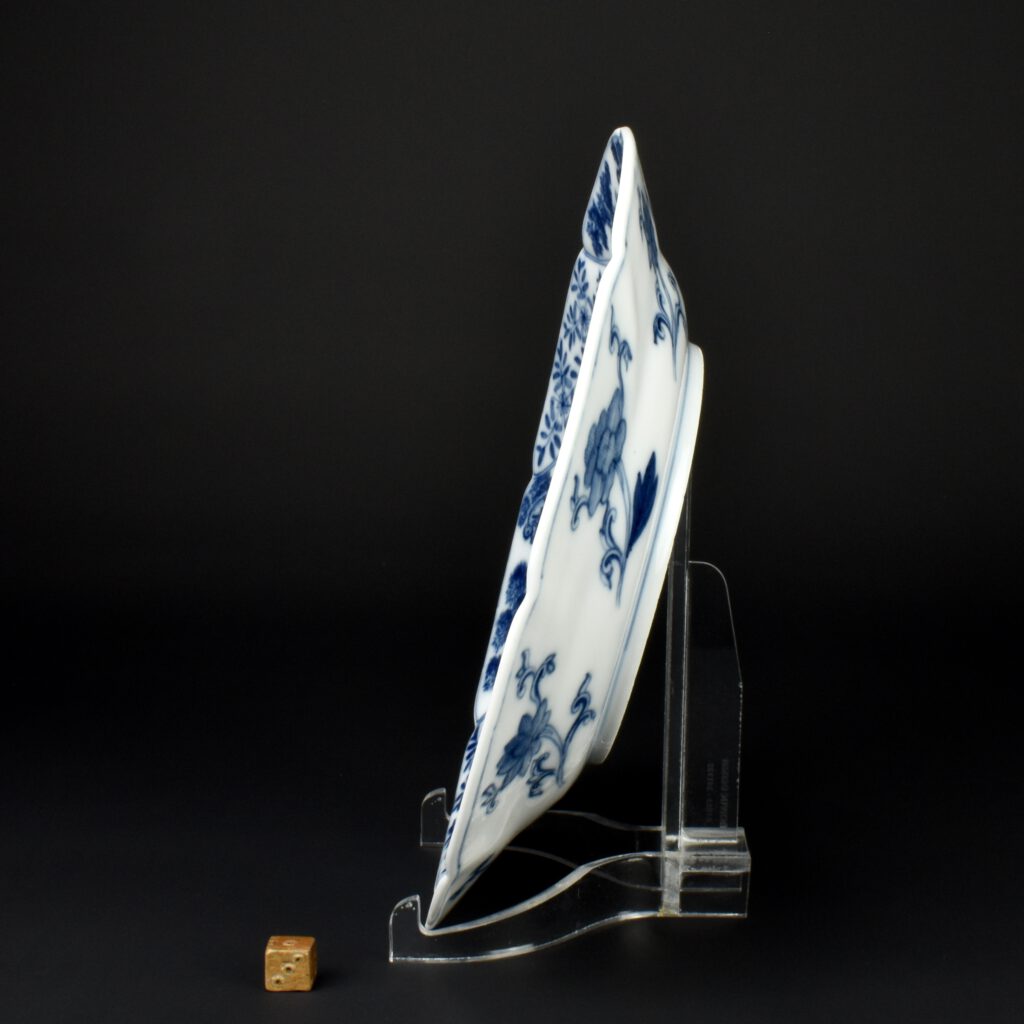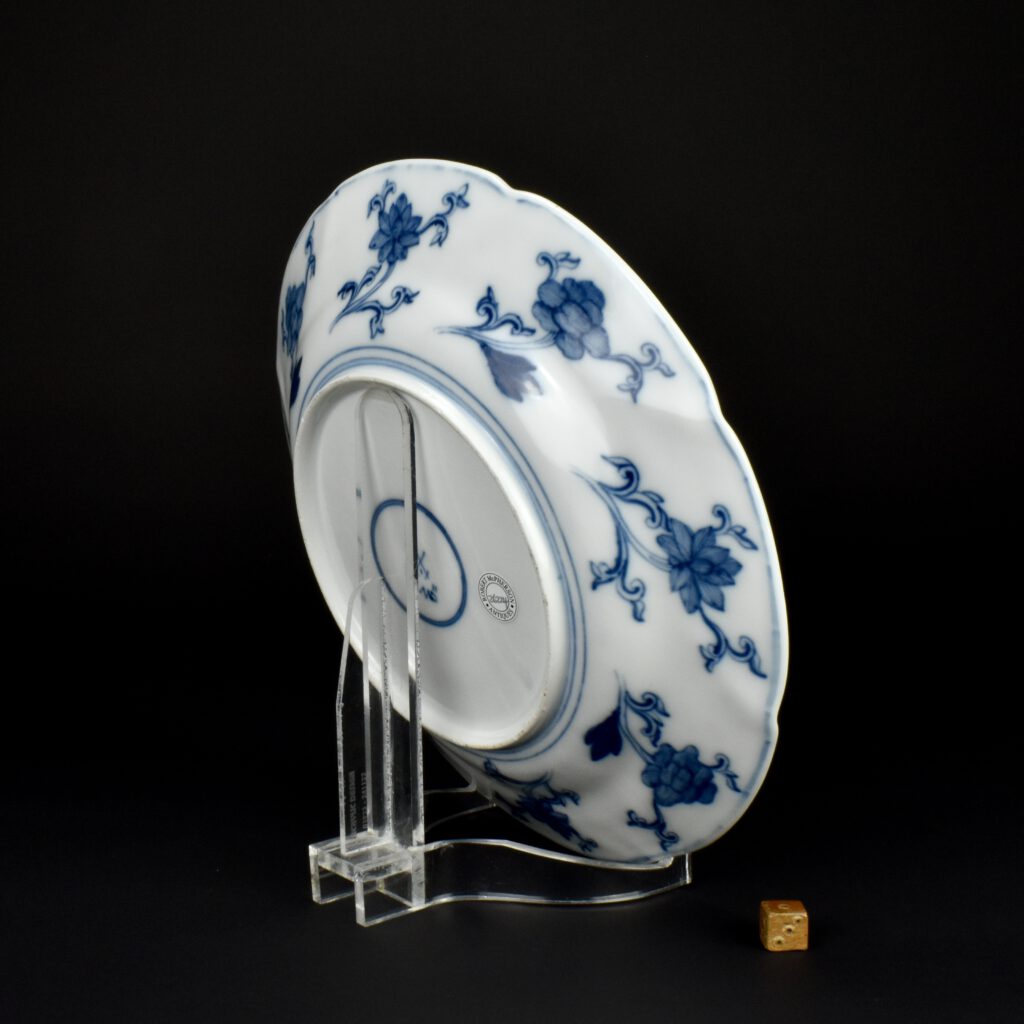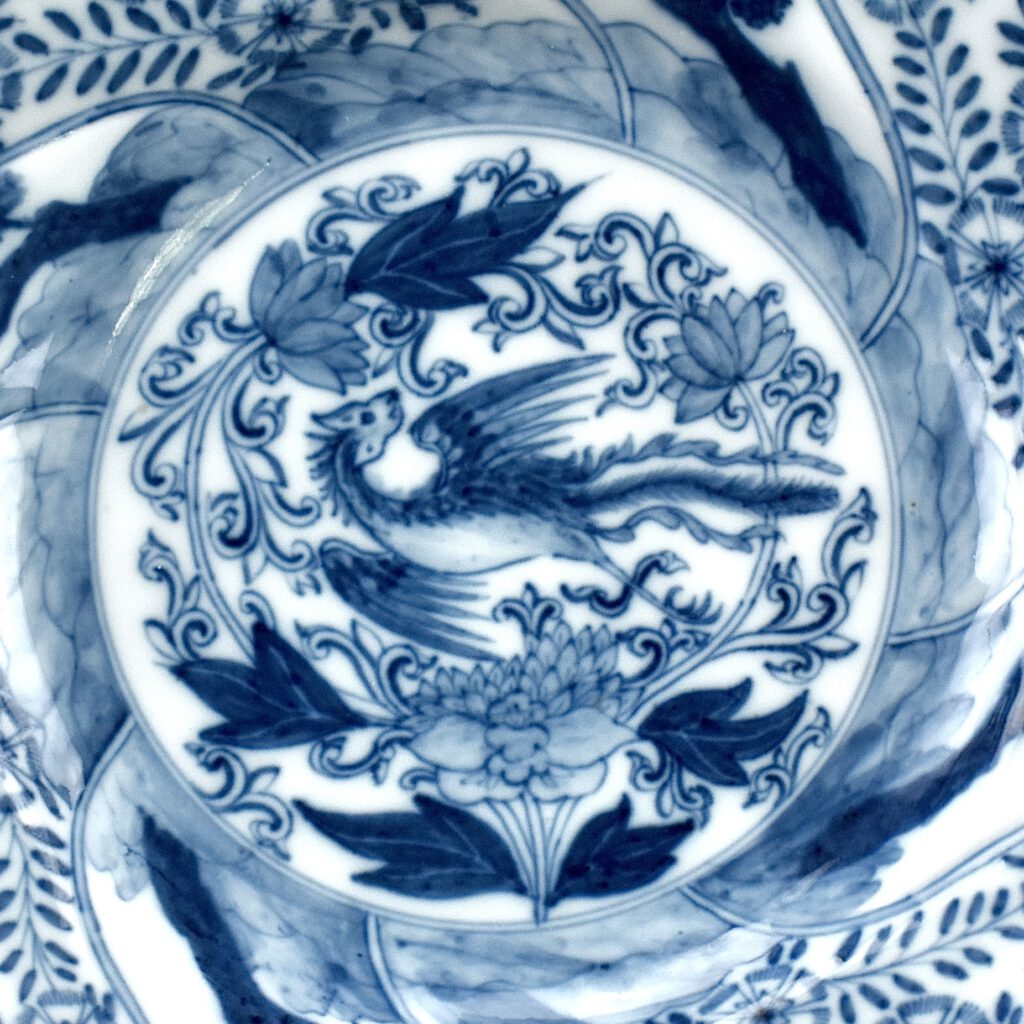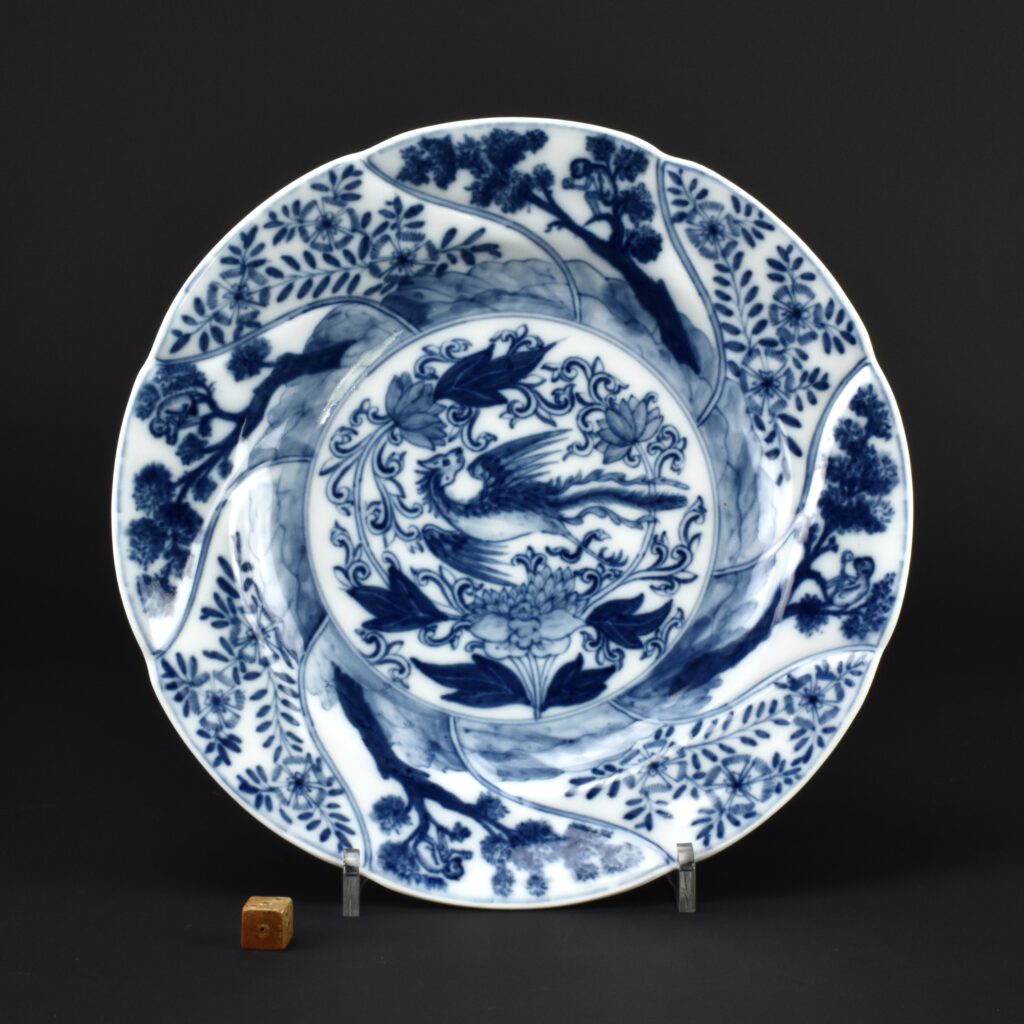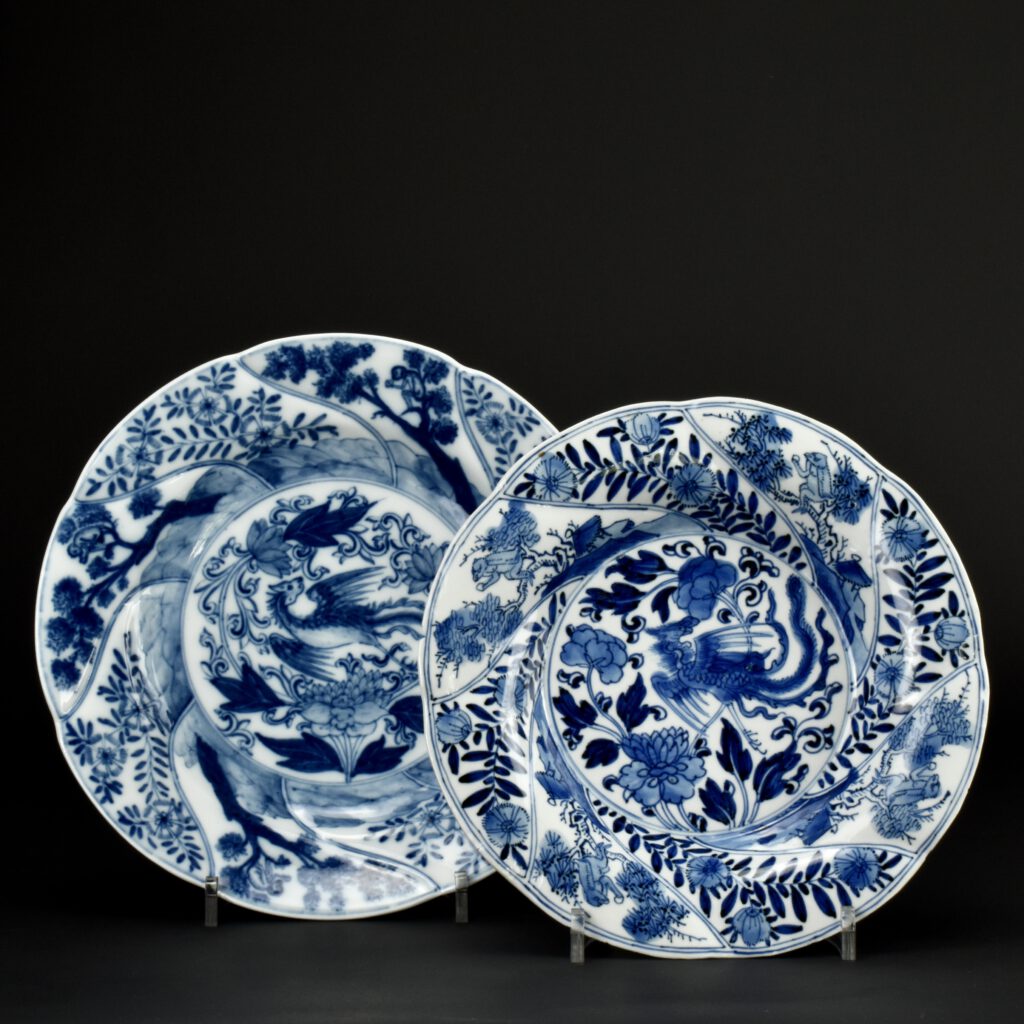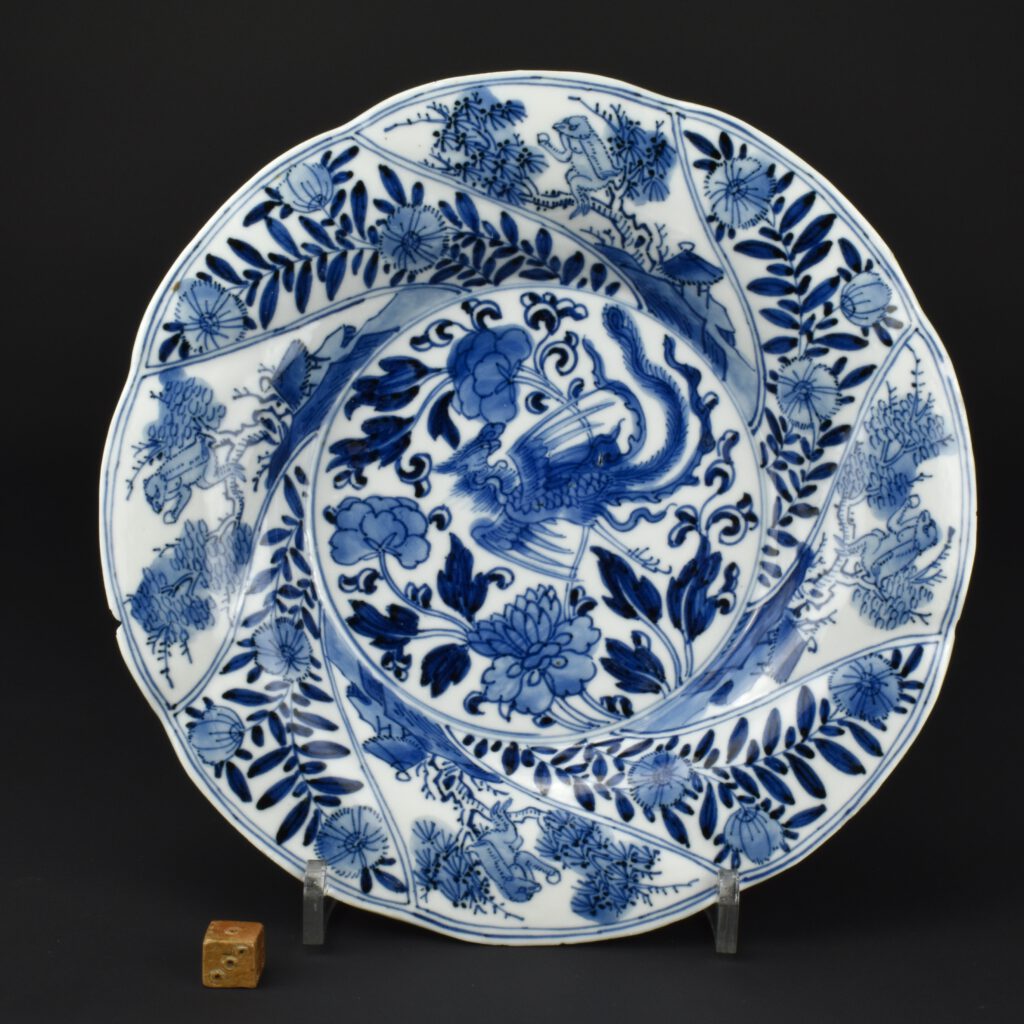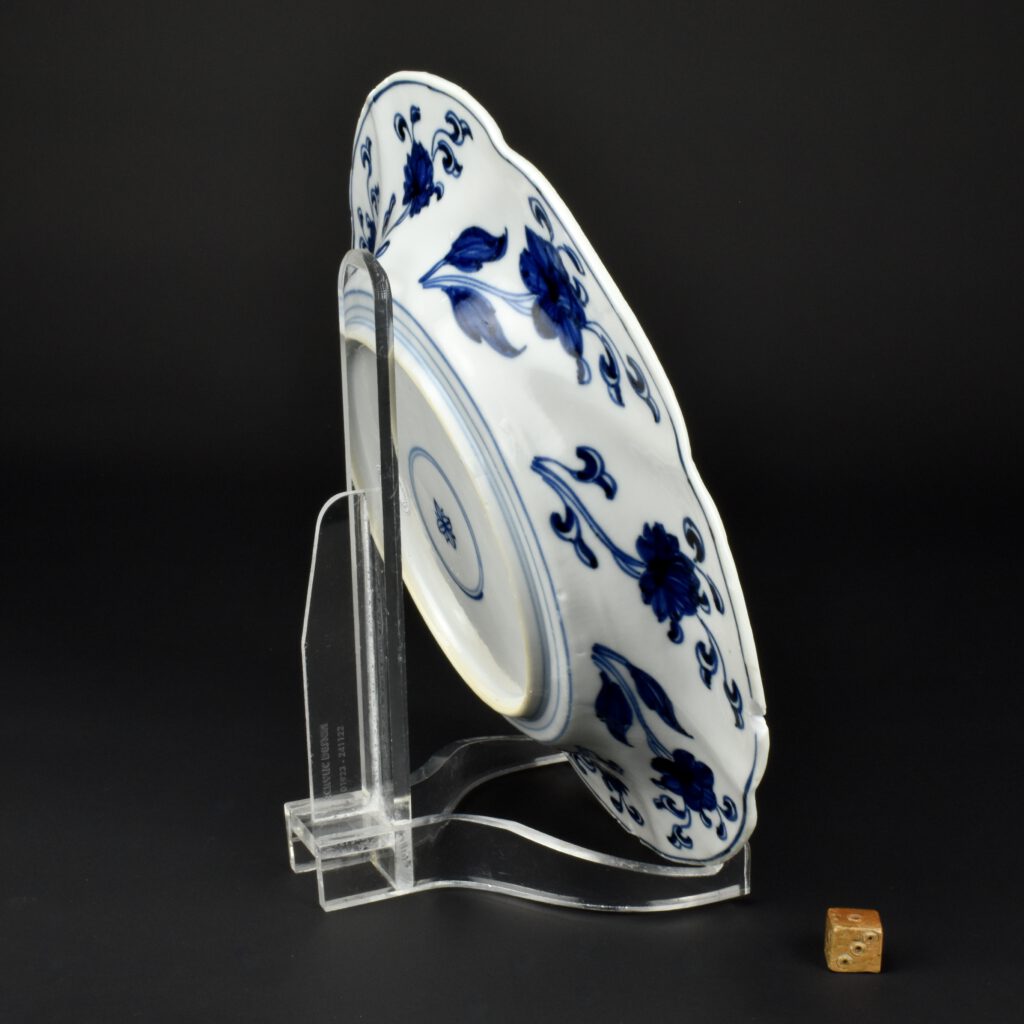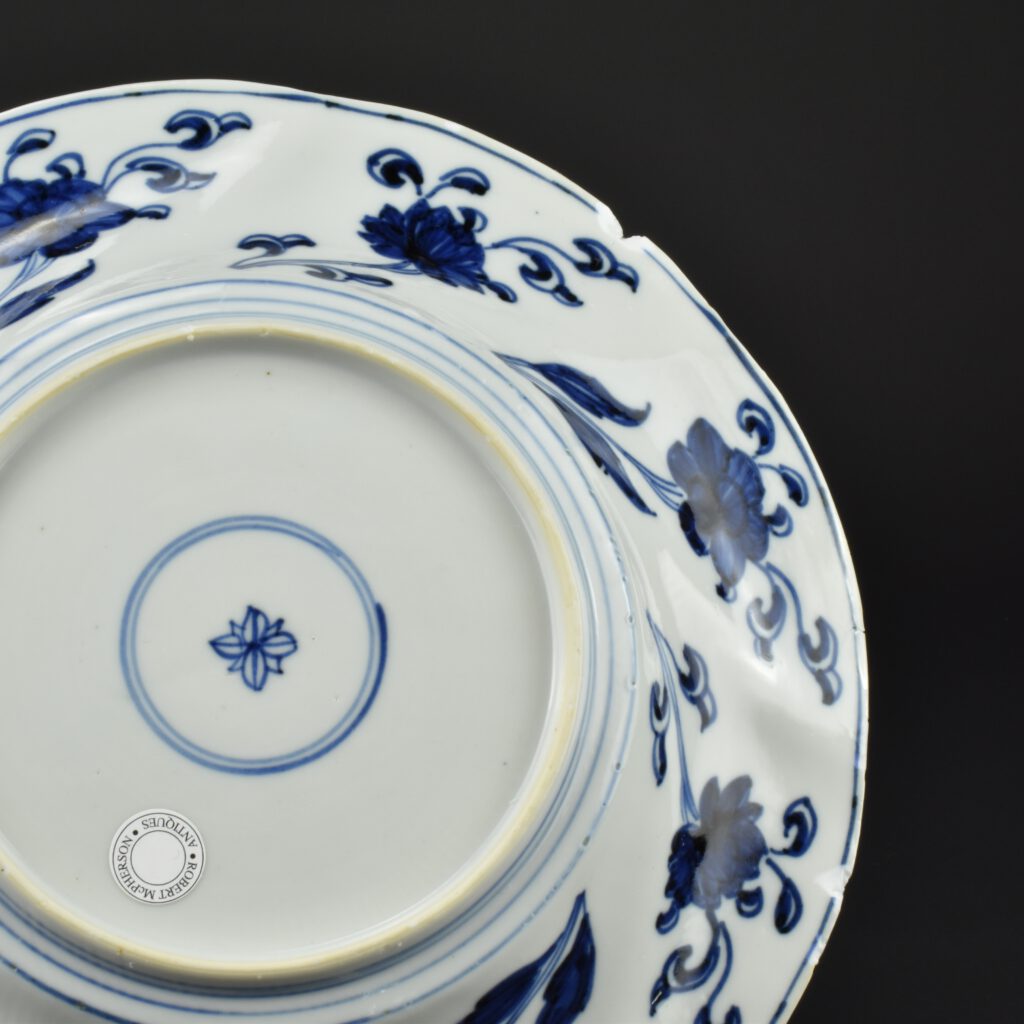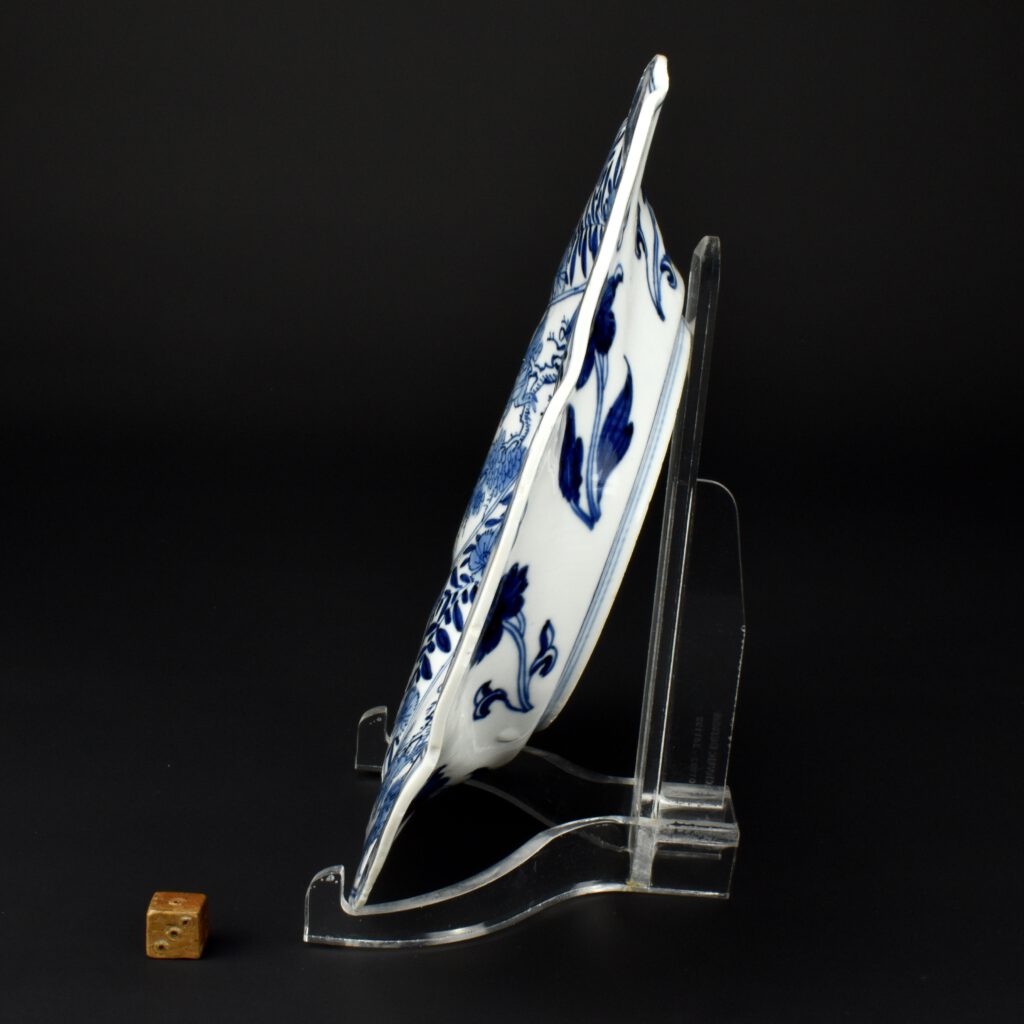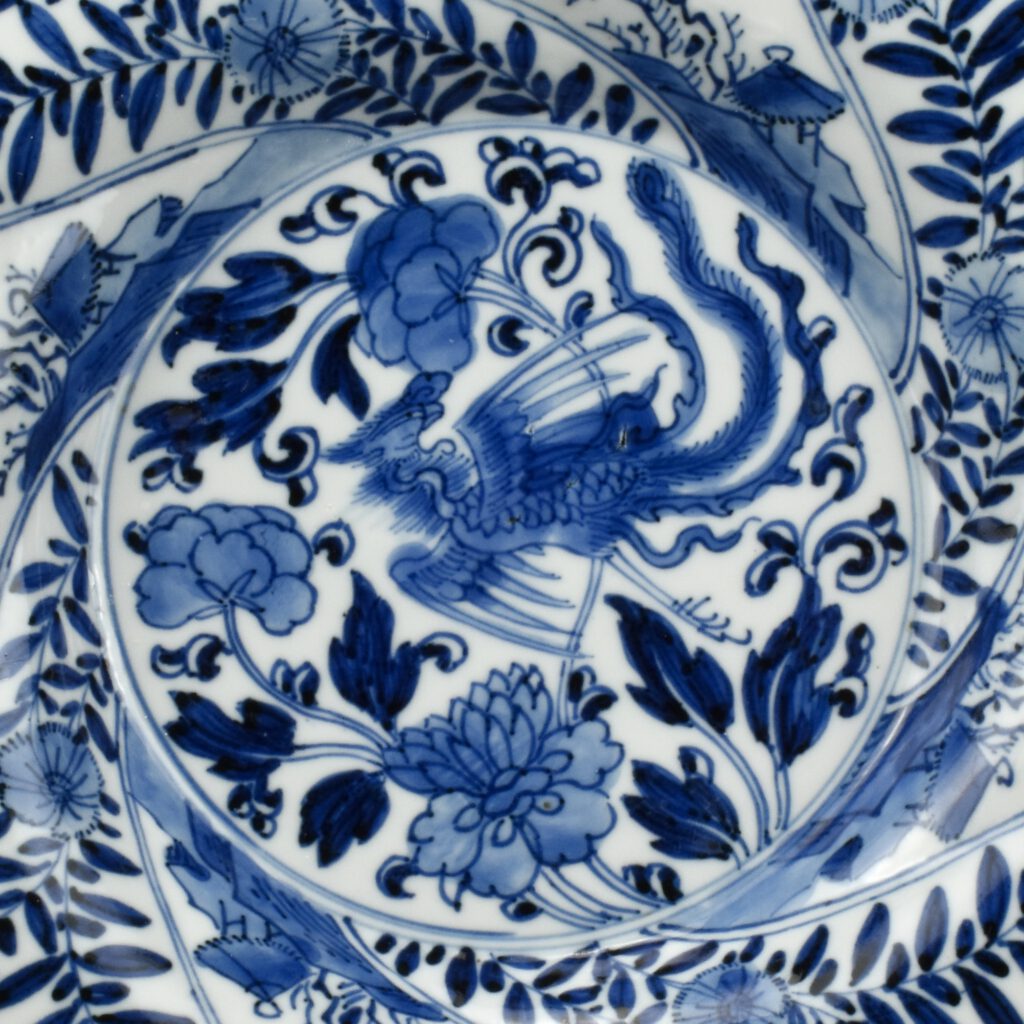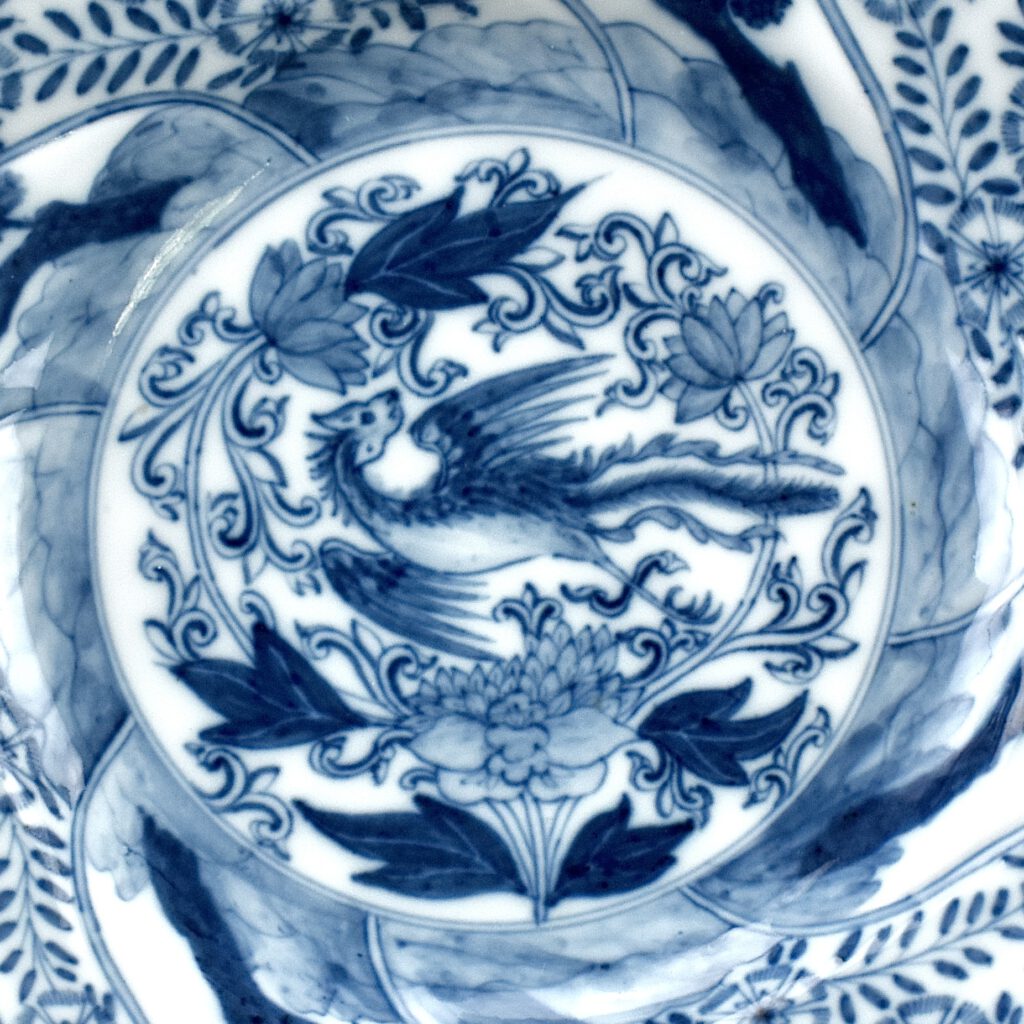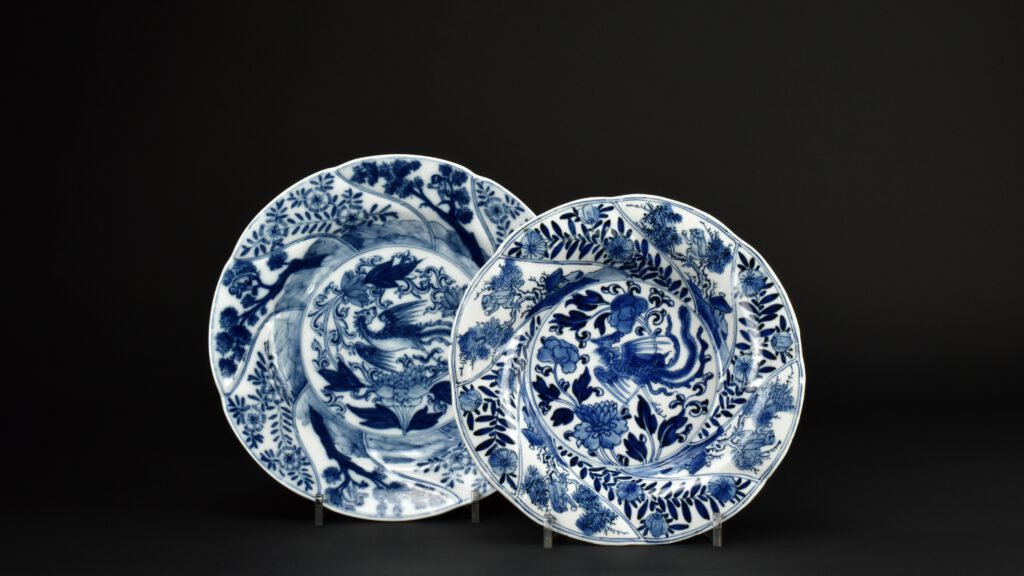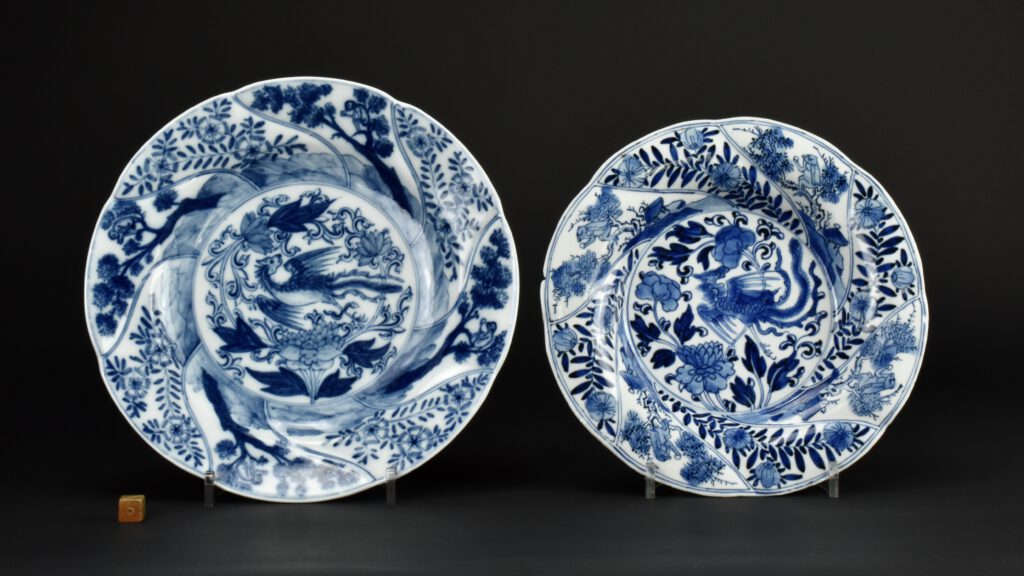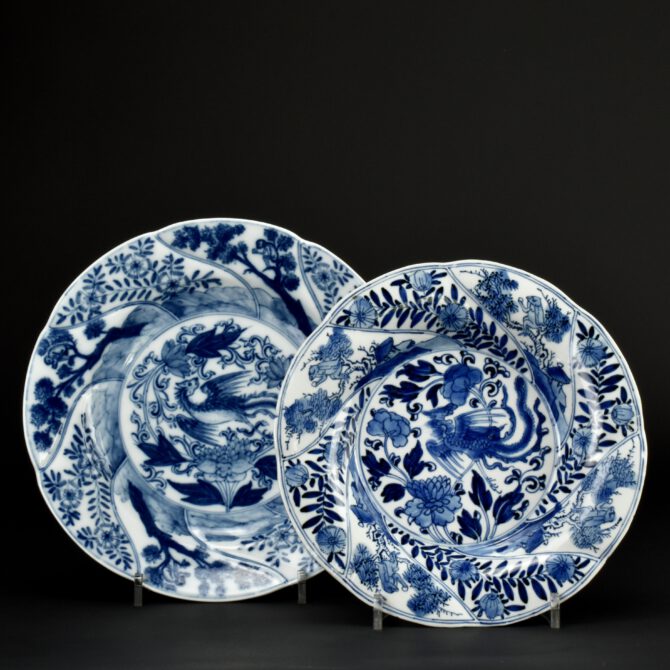
Rare Meissen Blue and White Dish Copying Kangxi, and a Kangxi Original
A Rare 18th Century Meissen Lobed Blue and White Porcelain Phoenix Dish c.1745, and an example of the type of Kangxi dish it was based on. The central design is a phoenix among flowering peony (Meissen dish with peony and lotus), the ogee borders with a monkey eating a peach, interspersed with flowering plants. The Meissen dish is marked with crossed swords and a dot, the painter’s mark Mö (possibly for Johann Carl Möbius the younger) and a small, impressed mark 32 (former’s number). The Kangxi dish has a simple flowerhead as a mark. The shape of the Kangxi dish, which is the smaller of the two dishes, is somewhat different to the Meissen example. The ogee shaped border rises more sharply than the Meissen dish, the fluting is more rounded, and it finishes at a right angle. All of this is less pronounced in the Meissen example, which only has a slight angle as it reaches gently upward. The painting of the Meissen dish is also different to the original, the phoenix looks quite different and is symmetrically arranged above the flowering lotus. The center of the Kangxi is asymmetrical, less formal and has huts by rocks in the border, these are omitted in the Meissen version. The design is a well know Chinese export one which is on European silver shape dishes, perhaps via Dutch Delft pottery. It is very likely Kangxi dishes of this shape, which are nearly always with this design, were in The Japanese Palace in Dresden formed by Augustus the strong. So it it is not surprising the Meissen factory copied them, well made their own version of them. These Kangxi dishes could have been copied exactly, however they chose to make their own interpretation of them at Meissen. The phoenix looks quite Baroque among scrolling foliage.
See Below For More Photographs and References.
SOLD
- Condition
- The 18th Century Meissen Dish, in excellent condition, minute frits to footrim. The Kangxi dish is in poor condition ; a large V shaped section to the border c.6 x 8 x 9 cm restuck (by me) large chips, small chips and fritting.
- Size
- Meissen ; Diameter 24.1 cm (9 1/2 inches) Kangxi : Diameter 21.7 cm (8 1/2 inches)
- Provenance
- N/A
- Stock number
- 26224
- References
- For a Kangxi porcelain dish of this design see : China for the West, Chinese Porcelain & other Decorative Arts for Export illustrated from the Mottahedeh Collection Vol. I ( David S. Howard and John Ayers, Sotheby`s,1978. ISBN 0-85667-035-9) catalogue number 18. For a Meissen example see : The Arnold Collection of Meissen Porcelain, 1710-1750 (New York, 2008) number 225.
Information
Meissen Porcelain
Meissen porcelain was the first hard-paste porcelain, or true porcelain to be developed in Europe. Development of this new hard-paste porcelain by Ehrenfried Walther von Tschirnhaus started in 1707. When Tschirnhaus suddenly died, the recipe apparently was handed over to Böttger, who within one week announced to the Elector that he could make porcelain. Böttger refined the formula and with some Dutch co-workers, experienced in firing and painting tiles, the stage was set for the manufacturing of porcelain. In 1709, the Elector established the first Meissen porcelain factory, placed Böttger`s laboratory at Albrechtsburg castle in Meissen and production started officially in 1710. In 1720 Johann Gregorius Höroldt became the director and introduced brilliant colours which made Meissen porcelain famous. The next sculptor, Johann Jakob Kirchner, was the first to make large-scale statues and figurines, especially of Baroque saints. His assistant was Johann Joachim Kaendler; in 1733 Kirchner resigned, and Kaendler took over as chief “modelmaster”. He became the most famous of the Meissen sculptors. Under his direction Meissen produced the series of small figurines, often depicting scenes of gallantry, which brought out the best of the new material. His menagerie of large-scale animals, left in the white, are some of the high points of European porcelain manufacture. His work resulted in the production of exquisite figurines in the rococo style that influenced porcelain making in all of Europe. Supported by assistants like Johann Friedrich Eberlein and Peter Reinecke, he worked until his death in 1775. In 1756, during the Seven Years` War, Prussian troops occupied Meissen, giving Frederick II of Prussia the opportunity to relocate some of the artisans to establish the Königliche Porzellan Manufaktur Berlin. With the changing tastes of the neoclassical period and the rise of Sèvres porcelain in the 1760s, Meissen had to readjust its production, and in the reorganization from 1763, C.W.E. Dietrich of the Dresden Academy became artistic director and Michel-Victor Acier from France became the modelmaster. The practice of impressing numerals that correspond to moulds in the inventory books began in 1763. Sèvres styles and ventures into Neoclassicism, such as matte bisque wares that had the effect of white marble, marked the factory`s output under Count Camillo Marcolini, from 1774.
